When you need to know the exact number of gallons in a pool, precise and accurate measurements are essential. If gallonage is over- or underestimated too much, maintaining a healthy and efficient pool becomes challenging. With the help of some basic geometry, it can be quick and easy to determine the volume or capacity of a swimming pool:
- Determine the surface area: Multiply the length of the pool by the width in feet.
- Calculate the volume in cubic feet: Multiply the surface area by the depth.
- Convert cubic feet to gallons: Multiply the number of cubic feet by 7.48.
With this step-by-step guide to determining the volume of a pool, it’s quick and easy to get the precise numbers you need to maintain a healthy pool of any size or shape.
How to Calculate Gallonage
The traditional industry-standard method of calculating the number of gallons in a pool relies on three basic measurements to determine the volume in gallons: the length, the width, and the depth. Multiplying the length by the width gives the surface area. Multiplying the surface area by the (average) depth provides the number of cubic feet in the pool. Converting cubic feet into gallons (or the capacity of the pool) is then straightforward: simply multiply by the number of gallons found in each cubic foot: 7.48 (or 7.5, to round up).
Today’s modern pools, however, are rarely a standard size or depth. Circular pools and spas, kidney-shaped pools, and irregularly shaped custom pools all require a different approach.
Rectangular Pools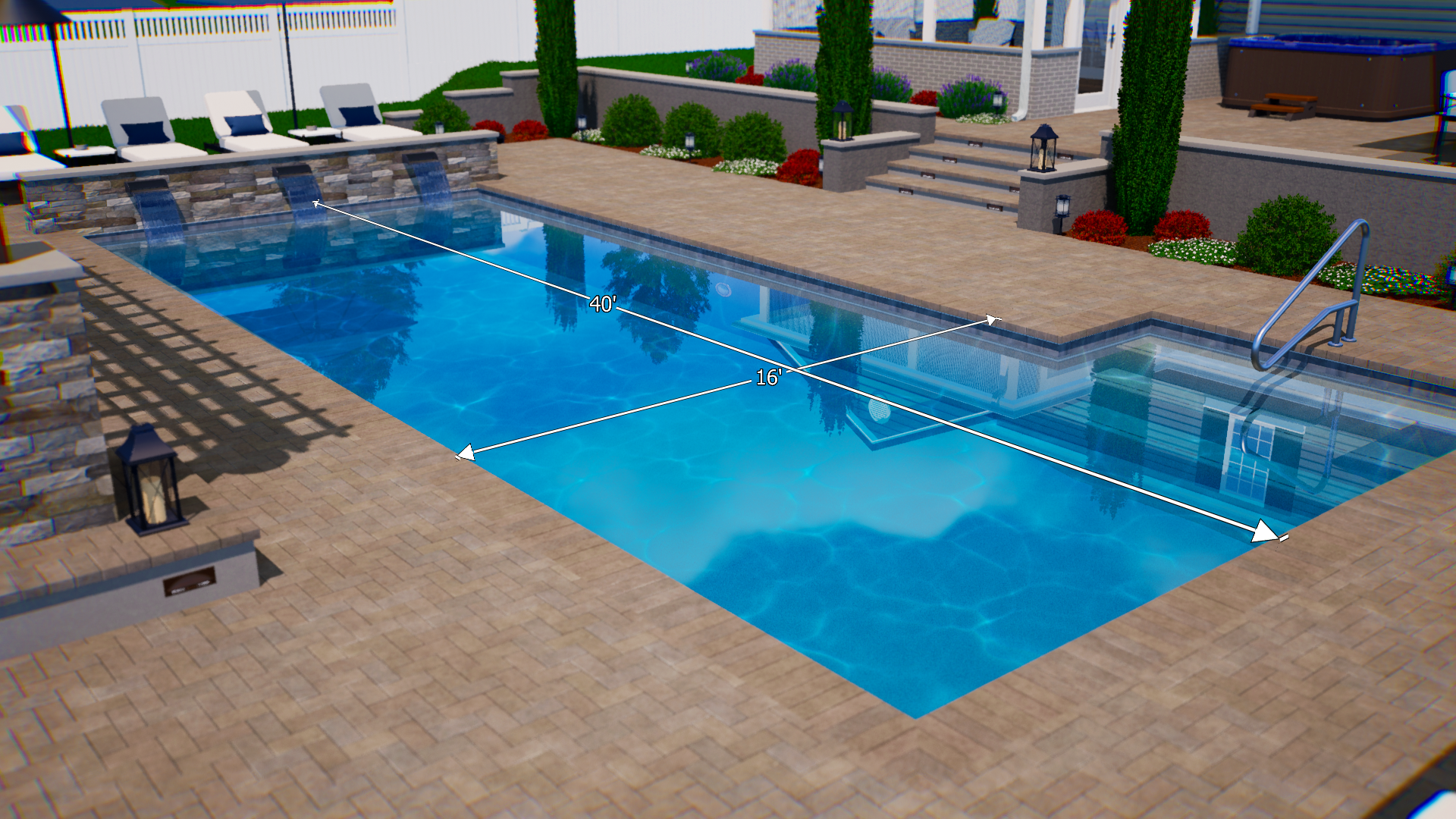
The volume of a basic rectangular pool, where the length and the width can be easily measured with a simple measuring tape or laser, can be relatively easy to calculate.
A pool that is 30 feet long by 15 feet wide would have a surface area of 450 square feet: 30 x 15 = 450. Once the surface area (or the square footage) is known, it must be multiplied by the depth, or the distance between the pool floor and the water level (not the coping at the edge of the pool). Typically, this is done by averaging the depth of the shallow end of the pool (which might measure 3 feet) with that of the deep end (at 8.5 feet): 3 + 8.5 = 11.5 / 2 = 5.75 feet.
The volume of that 30 x 15 pool with an average depth of 5.75 is 30 x 15 x 5.75 or 2,587.5. Multiplying that volume measurement by 7.48 converts the measurement into the number of gallons in the pool: 2,587.5 x 7.48 = 19,354.5 gallons.
However, many today might prefer a pool with a custom depth: those interested in fitness might prefer a deep lap pool for swimming laps, while families with young children might choose a “play pool” that is shallow on both ends and deeper in the middle. Therefore, it’s best to take careful measurements rather than assume the pool is of standard size or depth.
Knowing the exact measurements of the pool in question is key: internationally, an Olympic-sized swimming pool is measured in meters (50 meters by 25 meters). In the US, however, such pools (such as community pools or older NCAA pools used for short-course races) are often measured in yards. Sometimes, pool measurements are given in both meters and yards; it’s helpful to be certain which units of measurement are being used for the pool you’re assessing: meters or even both yards and meters. A community pool measured in 25 short-course yards (SCYs) might have a notably different volume than a competition pool measured in 25 short-course meters (SCMs).
For example, a typical short-course pool with a depth of 7 feet measuring 25 x 20 yards would be 75 feet long by 60 feet wide. Calculating the volume in gallons of that pool is straightforward: 75 x 60 x 7 x 7.48 = 235,620. A typical short-course pool measured in meters, however, would be 25 meters, or 82.25 inches, instead of 25 yards: 82.25 x 60 x 7 x 7.48 = 258,396.6, an increase of nearly 10%.
Circular Pools
To calculate the volume of a circular pool, a different equation is required: πr2 (or pi multiplied by the radius squared). To calculate the radius, measure the diameter (or the distance across the circle) and divide it by two.
For example, a spa with a diameter of 7 feet, or a radius of 3.5 feet, would have a surface area of 38.48 square feet: 3.14159 x 3.52 = 38.48. A typical spa often has a depth of 36 or 42 inches. Therefore, its capacity would be 38.48 x 36 x 7.48 = 10,361.9 gallons.
It’s worth noting that some above-ground pools slope significantly towards the center, while others don’t appreciably slope. Measuring the depth also might reveal if a pool has settled unevenly.
Taking the vertical depth measurement can be challenging when the pool or spa is full of water; using a plumb bob and line is one method to ensure accuracy. Eyeballing the depth by holding a pool skimmer vertically in the pool, marking the height of the water on the skimmer, and then measuring the height of the water relative to the skimmer is another method that can sometimes be used in a pinch.
Freeform, Irregular, or Kidney-Shaped Pools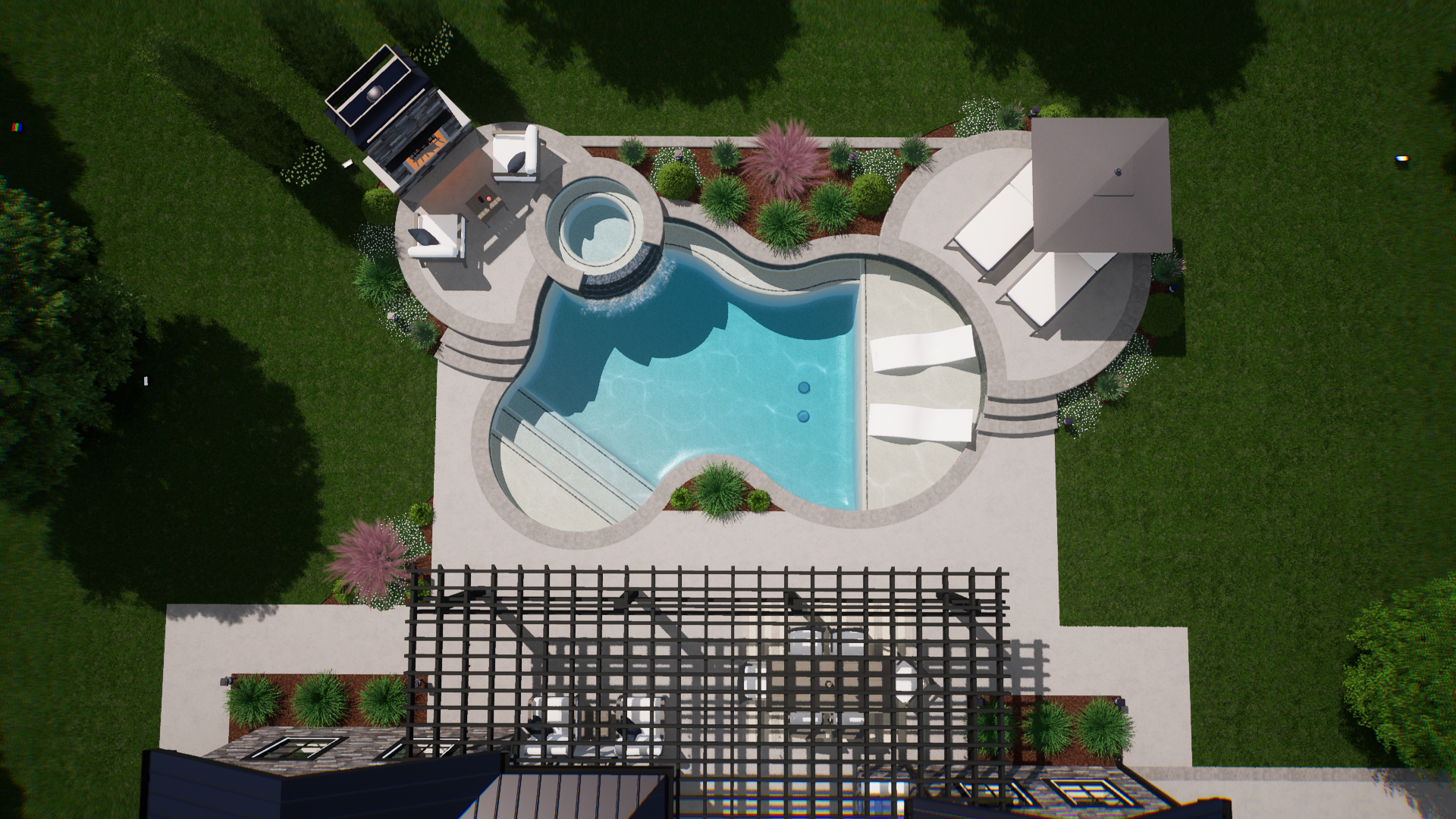
Custom pools require a custom combination of surface-area equations. It’s relatively simple to calculate the surface area of an ellipse, for example. Multiply pi by the distance from the center to the furthest edge and from the center to the closest edge: A=πab. The capacity of an oval pool that is 15 feet by 30 feet, or 7.5 x 15 from center to edge, would be measured as 3.14159 x 7.5 x 15 x 7 x 7.48 = 18,505.5 gallons.
A kidney-shaped pool might need to be broken down into a series of smaller measurements in order to calculate the surface area or the average depth. Sometimes, measuring the distance between the two most distant points of the pool suffices when measuring the length. And taking the average of the two widest distances across the pool can serve as the width measurement.
Freeform pools are often measured by measuring the distance between a series of closely spaced perimeter points and two fixed points around the pool. This method can produce fairly accurate results if done carefully; however, it is a time-consuming and challenging process.
DRAWBACKS OF TRADITIONAL CALCULATIONS
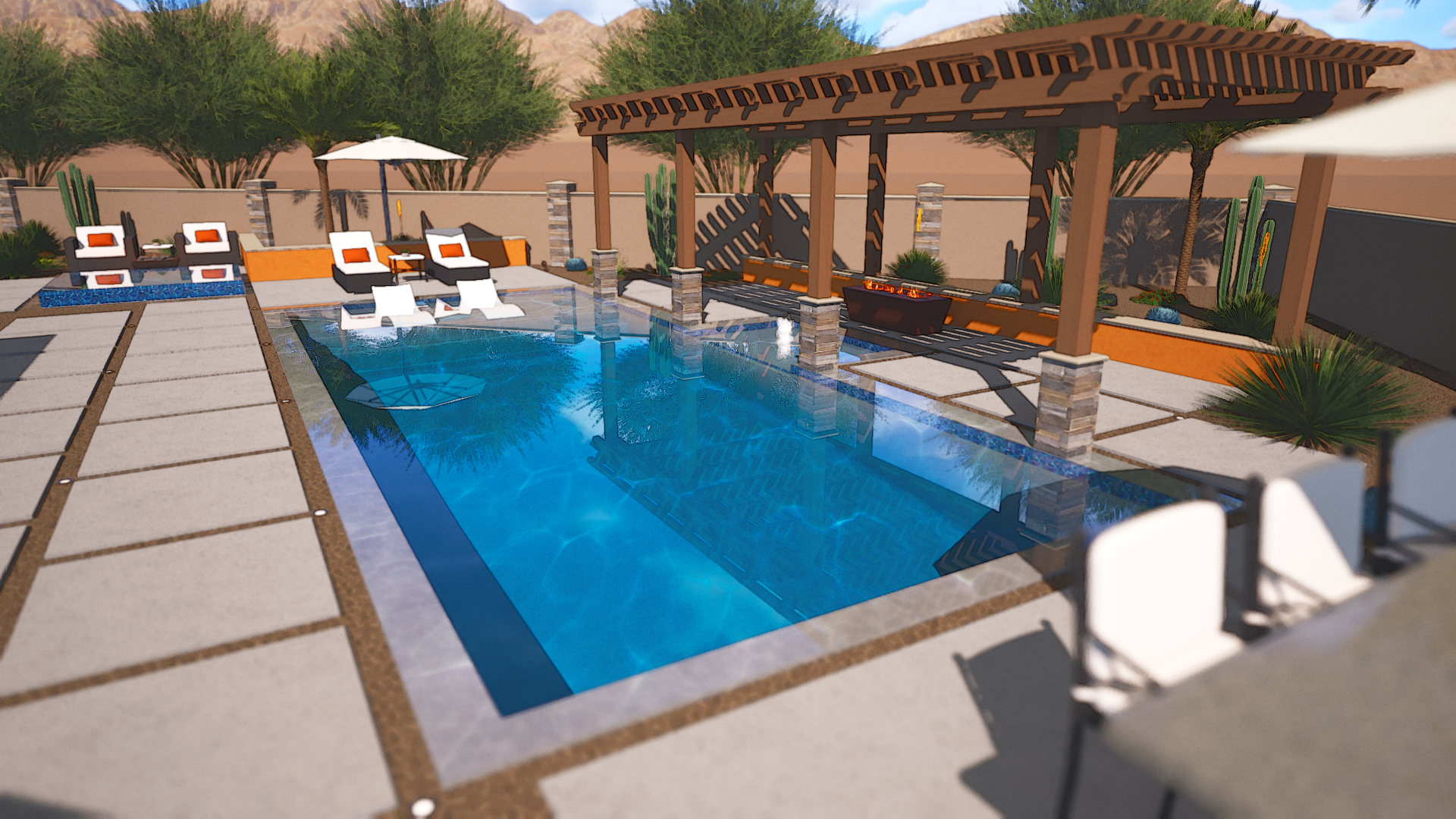
While quick calculations might suffice for basic rectangular pools without any bells or whistles, many of these mathematical shortcuts are too imprecise for today’s modern pool designs. Calculations for custom or freeform swimming pools can quickly become very complex, with the addition of steps, benches, pool coves, and intersecting decks or spas proving especially challenging.
As easy as it is to quickly reference one of the many free online charts offering the approximate gallonage of a given pool based on the approximate length and width, those charts provide only the roughest of estimates—far from accurate enough to rely on when gauging, for example, the appropriate mix of chemicals needed to keep a pool clean.
Choosing pool chemicals like chlorine, algaecide, or pH balancers; sizing equipment like pumps, heaters, and filters; and monitoring water usage or tracking when water is being lost to evaporation, backwashing, or leaks—these necessary maintenance tasks require a clear understanding of the actual amount of water in the pool.
Precise Smart Data Calculations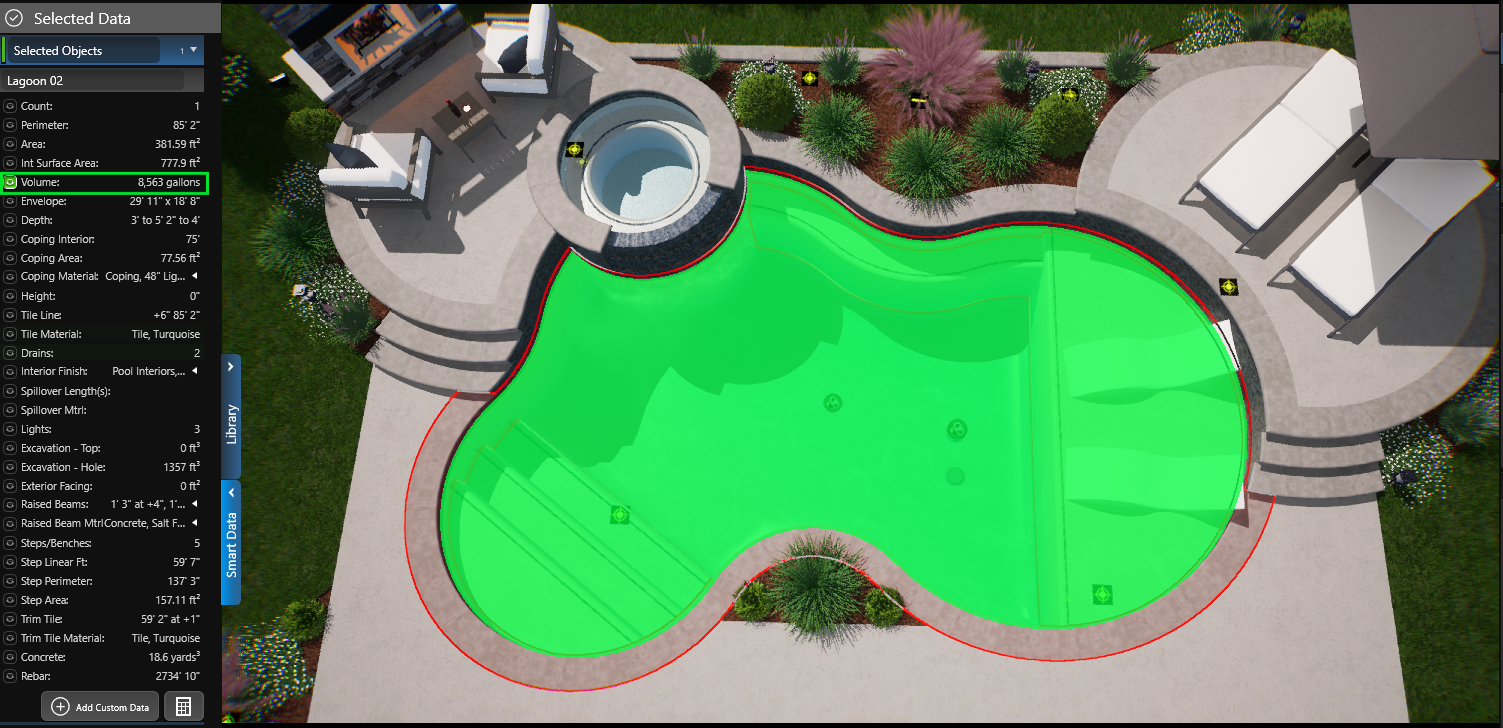
When detailed measurements are taken directly from the built pool design, the results are far more precise, accurate, and reliable than when simply estimated or even quickly calculated.
The Smart Data calculators integrated into 3D design software Pool Studio provide easy breakdowns of complex calculations to put the numbers you need right in front of you. By using 3D math to calculate gallonage, Smart Data goes beyond generic equations to provide far more precise and reliable results of even the most irregularly shaped freeform pool. That’s possible because these smart calculations take into consideration not only the exact scale of each shape but also any interactions with other shapes, from steps to spas.
Smart Data tools integrate seamlessly with 3D design software, so calculations update instantly and automatically as you draw and edit a design. You get the flexibility of making changes without having to manually run the numbers again or without having to devise a custom set of equations for each custom pool.
With Smart Data, the software calculates the 3D volume, instantly assessing swimming pools of any shape or size while taking into account the precise measurements of features like steps, benches, spas, sunken seating areas, and swim-up bars and details like the cove radius and water level. When you design with Pool Studio, you need only select the pool shape, choose Smart Data, and visit the Configuration Menu to choose to measure the gallon capacity from either the waterline or the top of the lip. Because calculations are affected by any intersections with other shapes as well as by adjusted lip heights, it’s important to double-check this setting for each new project to achieve the most precise results.
These Smart Data results are so precise and accurate that they can produce gallonage results that differ significantly from those produced by the traditional “length x width x depth x 7.5” shortcut. Smart Data’s results are designed to be far more precise, accurate, and detailed than the rough estimates provided by any such “back of the envelope” calculations, providing you with the clarity and insight you need.
The Most Reliable Gallonage Results
Knowing the exact gallonage of a pool is critical to maintaining a healthy, clean, and balanced pool—whether choosing the right equipment, planning chemical treatments, or monitoring water costs and usage. The automatic calculation tools in Pool Studio 3D design software provide a precisely detailed overview of every element of a swimming pool, making Smart Data measurements the most reliable and the most accurate way to calculate the number of gallons in your pool.



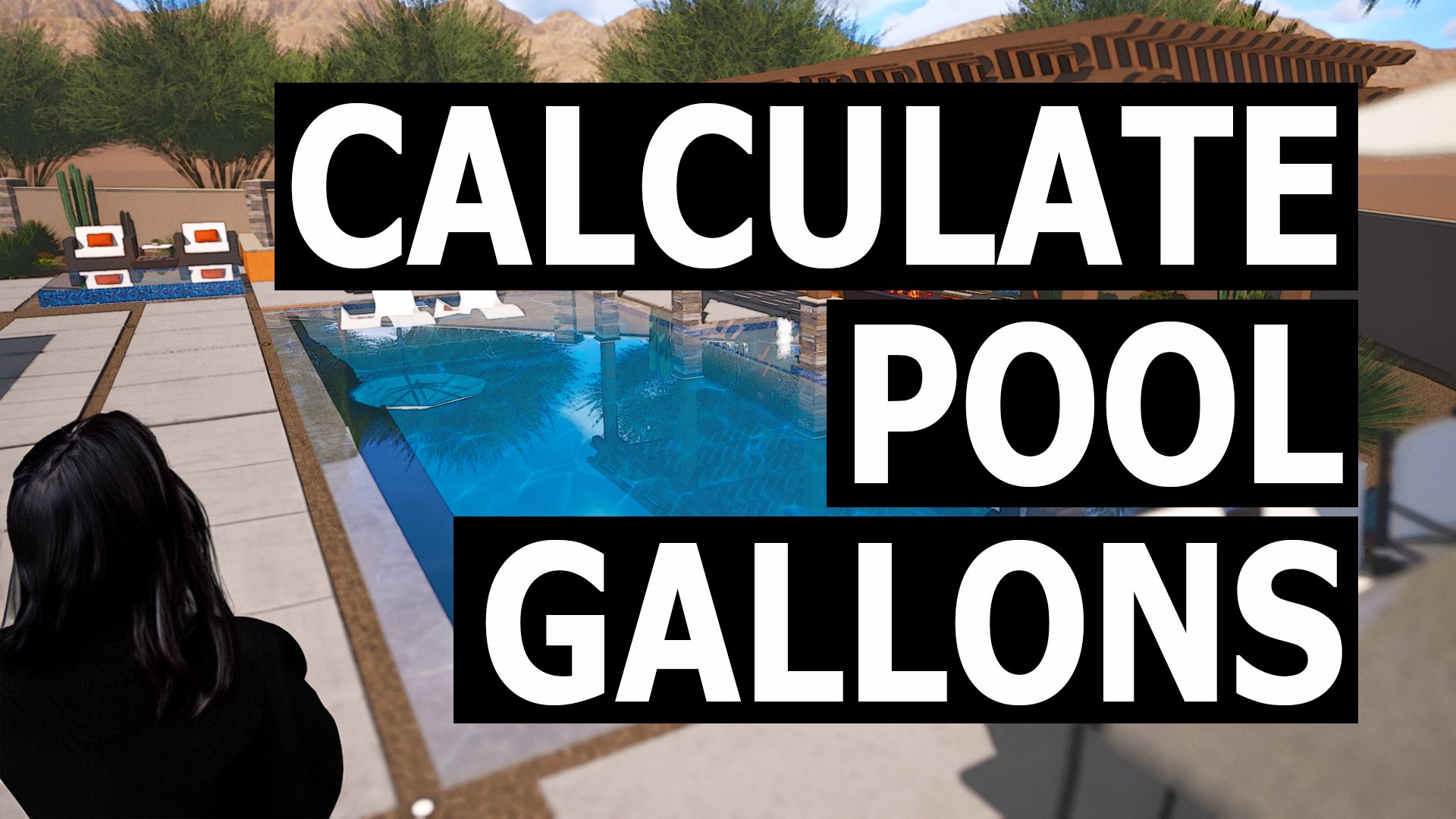

 June 16, 2023
June 16, 2023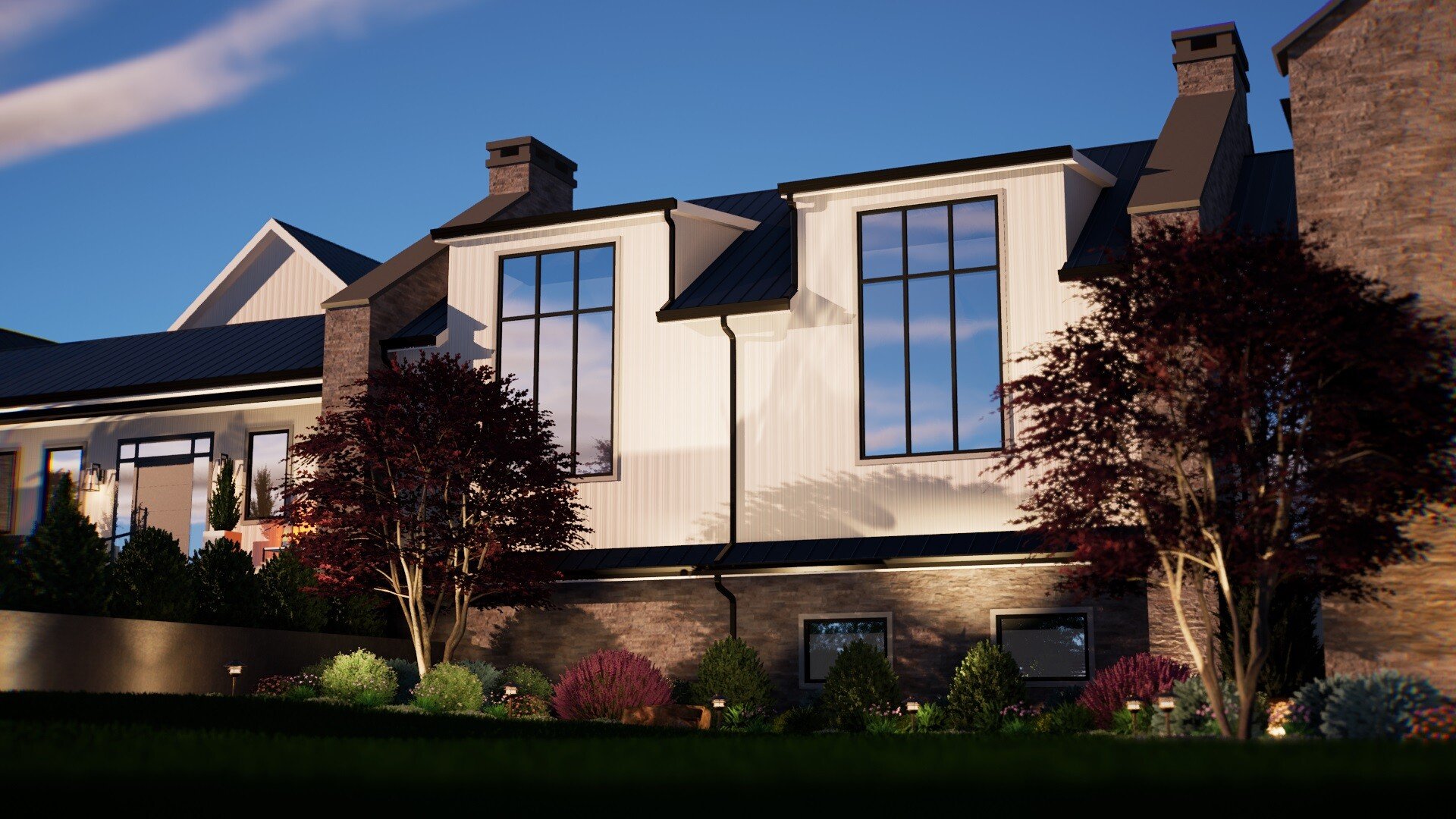






Comments